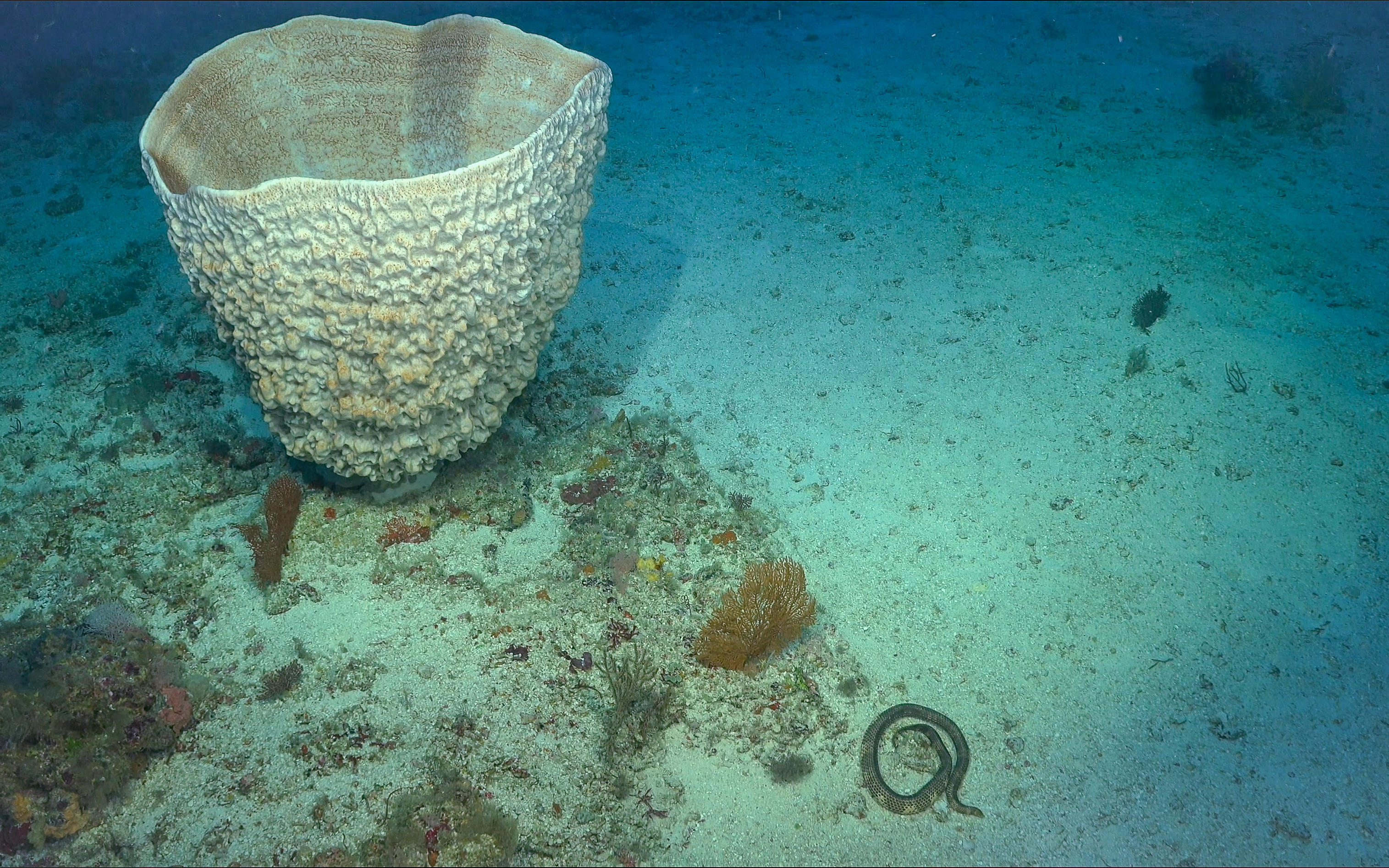For the last 23 years, the short-nosed sea snake was thought extinct at Ashmore Reef - but now this lost species has been found by researchers during a deep-sea expedition, 67m below the ocean surface in the "twilight zone".
The discovery was made last week by a team led by Dr Karen Miller from the Australian Institute of Marine Science, with scientists from the Western Australian Museum, Curtin University and University of Western Australia.
The researchers are on board Schmidt Ocean Institute R/V Falkor - a ship equipped with advanced robotic technologies - and are exploring the mysterious depths of the mesophotic coral reef ecosystem at Ashmore Reef.
AIMS' Dr Karen Miller said the critically endangered short-nosed sea snake (Aipysurus apraefrontalis) has not been sighted at Ashmore Reef since 1998, and marks the discovery as a "second chance" to understand and protect this species.
"The short-nosed sea snake was thought to be lost forever from Ashmore - so it truly is a remarkable find, the whole ship of researchers was squealing in excitement," she said.
"We can't protect species we don't know are there - this is why this expedition is so important, we're at depths no-one has explored before, gaining critical knowledge as we uncover Ashmore's deep-sea secrets.
"We suspect the mesophotic coral ecosystem could have significant ecological importance and very well serve as a refuge for species lost from shallow waters, such as sea snakes."

The short-nosed sea snake is one of four sea snake species discovered during the deep-sea expedition, leaving 13 species still lost from Ashmore Reef's once thriving sea snake assemblage.
Dr Nerida Wilson from the Western Australian Museum, who is also on board the R/V Falkor, said Ashmore Reef, off WA's north coast, was once the most biodiverse global hotspot for sea snakes.
"Over a period of decades, sea snakes have mysteriously disappeared from the shallow waters of Ashmore Reef," she said.
"This discovery shows that we have so much more to learn about the twilight zone, and we are hopeful to find more of Ashmore's lost sea snake species."
The short-nosed sea snake was thought extinct until populations were discovered in coastal Western Australia by joint AIMS-James Cook University researcher Blanche d'Anastasi and Associate Professor Kate Sanders, from the University of Adelaide.
Sea snake scientist Blanche d'Anastasi, who has uncovered critical information about Western Australia's sea snakes, said research suggests new coastal populations may even represent a separate species.
"The re-discovery of the short-nosed sea snake at Ashmore Reef raises big questions," she said.
"Are they part of a breeding population that remained undetected, or are these just straggling individuals that remain following the shallow water extinction event? Are these snakes a different species to the coastal ones? Can we take action to protect them?
"I hope this expedition will uncover more secrets about sea snakes - it's giving us an extraordinary opportunity to use science to inform the protection of these snakes."
Ashmore Reef Marine Park is managed by Parks Australia as a Sanctuary Zone and is afforded Australia's highest level of marine protection, where no extractive activities are allowed.
Jennifer Hoy, Marine Park Manager at Parks Australia said Australian Marine Parks Branch was excited by the recent discovery of sea snakes in the depths of Ashmore Reef.
"This is particularly thrilling as Ashmore Reef Marine Park is one of Australia's most remote marine parks making it challenging for researchers to access for monitoring and surveying species," she said.
"The discovery of the short-nosed sea snake gives us hope that the AIMS team may come across even more sea snake species within the marine park.
"It highlights the importance of our work in investing in research to enhance our understanding of marine park values and protection of the marine environment."
The R/V Falkor is equipped with advanced robotic diving technologies, including the remotely operated underwater vehicle SuBastian, which has allowed the team to explore these remarkable new territories.
Schmidt Ocean Institute live streams all of their dives on YouTube and Facebook. This is their last expedition in Australia after more than a year-long campaign that has led to numerous discoveries that can be found here.






